Repertoire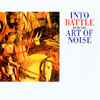
The feeling of glee that came over me finding something like this inthe bins at a cheap price was amazing. It's almost as if somebody hasbeen reading my mind as of late. German label Repertoire has snatchedthis gem from AON's back catalogue—their first 12" EP, originallyreleased on ZTT back in 1983—and slapped some bonus 12" remixes andincluded a DVD of videos. The Art of Noise were one of the first groupsto introduce sampling of non-musical sounds into musical rhythms andtextures and
Into Battle,their first EP is a groundbreaking legend. The EP featured two minorhits, the chunky "Beat Box," which influenced a ton of 1980s acts andprovided the blueprints for a style later described as "big beat" inthe 1990s, and the 10+ minute lush "Moments in Love," most famouslyused as Madonna and Sean Penn's wedding march. Both were later compiledon other AON releases like
Who's Afraid of... and
Daft,but there was something that made this EP a bit more interesrting.Short pieces like "Battle," "Flesh In Armor," "Donna," and thesix-second "Bright Noise" add neat little transitions, which wassomething I had always kind of hoped other bands might take hint fromand make a 12" EP something more than just an ordinary 12" single.(Tragically, it didn't happen enough.) The CD is rounded out with two12" remixes of their arguably biggest single from the TrevorHorn-produced ZTT era, "Close to the Edit," both of which of which Ihad never heard and am likewise pleased by the addition of live pianoand other instrumentation not present in the original versions. The DVDwhich comes along with this is what nearly made me drool. Looking atthe package, it lists the videos for "Moments in Love," "Beat Box," and"Close to the Edit" (as well as the forgettable track "Metaforce" fromtheir reunion a couple years ago). Back in the 1980s, everything wasn'tas good as people think they remember, musically. MTV didn't actuallyplay a lot of cool stuff, as I vividly remember being bombarded withTom Petty, John (Cougar? not Cougar!) Mellencamp, and Bryan Adams. Itwas the show
Night Flight on the USA Network where I firstsaw/heard/videotaped bands like Coil, Skinny Puppy, Cabaret Voltaire,Wire, and The Art of Noise. I have aging videotapes with videos like"Beat Box" recorded and the thought of it on a DVD was a divine gift.However, much to my dismay, "Beat Box" doesn't appear despite beinglisted (BASTARDS!) I do get to have the gorgeous video of "Moments inLove" with wigs, singing turtles, and ice-skaters in slow motion andthe award-winning classic of "Close (to the Edit)," where three guysand a little girl trash various musical instruments, so, I guess I getwhat I pay for. However, should this "Repertoire Records" (never heardof them before this) ever fix this mistake, I'll be quite happy andquickly try to exchange this version with them.
samples:
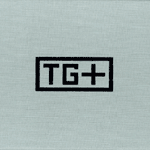 Everybody should know by now that this boxed set completes the CD collection of all the live Throbbing Gristle concerts begun with the CD release of 24 about a year ago. Complain all you want about cashing in or whatever, but for the package, it's an appropriate price.
Everybody should know by now that this boxed set completes the CD collection of all the live Throbbing Gristle concerts begun with the CD release of 24 about a year ago. Complain all you want about cashing in or whatever, but for the package, it's an appropriate price.


 Some bands just come together and beautiful sounds start to flow out.It's rare, but when it happens and the band is a true collaborationreflecting equal parts of all involved it can be truly amazing. LukeSutherland has made some fascinating music with Long Fine Killie andBows, as well as contributing lovely violin to recent Mogwai releases.Volker Bertelmann is making a name for himself with the electronic popmachinations of Tontraeger, and the two decided a project togethermight be in order. After working together a short time, withSutherland's smooth vocals and delicate guitar complementingBertelmann's beats and keys quite nicely, the two decided some bassmight round out the sound a bit better. Enter workaholic StefanSchneider, who loved what he heard and jumped in, becoming a fullmember of the band and adding his own trademark flavorings. This isindeed the aforementioned rare musical tour de force; the soundtrack ofwaking dreams, remembering what just happened in the mind and knowingthat it was truly magnificent. Sutherland's lyrics are freshly bizarrewhen present ("boy bands just escape me", "that's just fuckingheartbreak if you're a guy"), but it's clear why his work as an authorhas been lavished in recent years: he has a poet's heart with asatirist's delivery. The two electronic gurus craft a comfortable bedfor it all to lie on, and lie it does, like a young couple staring atthe clouds or stars above in wistful complacence. Even when Sutherlanddoesn't feel the need to sing and the trio just play, it's trulyhair-raising all over the place. Perfect programmed beats and chimingguitars meet with low dull bass and Rhodes in ways that are guaranteedto put a smile on the face. This is one I'll want to hear more of inthe future, I'm sure, and hopefully they're game to make it.
Some bands just come together and beautiful sounds start to flow out.It's rare, but when it happens and the band is a true collaborationreflecting equal parts of all involved it can be truly amazing. LukeSutherland has made some fascinating music with Long Fine Killie andBows, as well as contributing lovely violin to recent Mogwai releases.Volker Bertelmann is making a name for himself with the electronic popmachinations of Tontraeger, and the two decided a project togethermight be in order. After working together a short time, withSutherland's smooth vocals and delicate guitar complementingBertelmann's beats and keys quite nicely, the two decided some bassmight round out the sound a bit better. Enter workaholic StefanSchneider, who loved what he heard and jumped in, becoming a fullmember of the band and adding his own trademark flavorings. This isindeed the aforementioned rare musical tour de force; the soundtrack ofwaking dreams, remembering what just happened in the mind and knowingthat it was truly magnificent. Sutherland's lyrics are freshly bizarrewhen present ("boy bands just escape me", "that's just fuckingheartbreak if you're a guy"), but it's clear why his work as an authorhas been lavished in recent years: he has a poet's heart with asatirist's delivery. The two electronic gurus craft a comfortable bedfor it all to lie on, and lie it does, like a young couple staring atthe clouds or stars above in wistful complacence. Even when Sutherlanddoesn't feel the need to sing and the trio just play, it's trulyhair-raising all over the place. Perfect programmed beats and chimingguitars meet with low dull bass and Rhodes in ways that are guaranteedto put a smile on the face. This is one I'll want to hear more of inthe future, I'm sure, and hopefully they're game to make it. 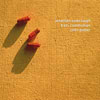 This is the sound of inner experience. Isolation drifts over the bodyand the soul, trapped in a mist that slowly reveals itself over thecourse of these two discs. Jonathan Coleclough, Steven Miller, andColin Potter are all gurus of the meditative and sublime, crafting fromseemingly thin air the most delicate and shattering of sounds. This isthe hinge of their music; the juxtaposition that carries with it theforce of every living particular in the universe. Though seeminglydelicate and composed of broken clocks, cold wind through the trees,and the metallic OMof consciousness, every track has a heaviness or a weight that can feelparanoid or transcendental. Bass Communion's mix of Potter andColeclough's "Yossaria" begins as a thick grinding of sludge passingthrough layers of crust before emerging out of the darkness with thecall of a fog horn in the distance. Afterwards, the song is alldesolation and the slow collapse of time. Bass Communion virtuallystrips away all conceptual possibilities and leaves only a thing,gorgeous and nameless, to communicate with. By the end of the songbirds are chirping and the sound of a river passes by in thebackground; it truly feels like a journey from the unreal to tangiblecomfort. Potter and Coleclough both contribute two mixes. Potter sticksto a generally soft approach that only escalates the mystical aurasurrounding much of the album; his rendition of "Raiser" blendsrhythmic pulses with the chaos of a futuristic hospital bleeding thesickly glow of fluorescent lights. It's Coleclough's work that takesthe cake, however. "Pethidine" is a twenty-eight minute pause, frozenperfectly in space and time. It develops and unfolds slowly, revealingeach of its particularities only to show that they are indeed oneentity turning inside out. The effect of listening to this as loud ashumanly possible is outstanding; being surrounded physically by thissound has literally kept me warm at night. It isn't suffocation, but itis a presence. The second disc included is Coleclough's secondcontribution and the final piece of the album. Clocking in atseventy-four minutes long, "Epidural" manages to erase all memory, allsensation, and leave only the truth of intuition in its wake. Thismusic deserves a change to be recognized; its immediacy, weight, andthrust is unequalled in much of the music I know.
This is the sound of inner experience. Isolation drifts over the bodyand the soul, trapped in a mist that slowly reveals itself over thecourse of these two discs. Jonathan Coleclough, Steven Miller, andColin Potter are all gurus of the meditative and sublime, crafting fromseemingly thin air the most delicate and shattering of sounds. This isthe hinge of their music; the juxtaposition that carries with it theforce of every living particular in the universe. Though seeminglydelicate and composed of broken clocks, cold wind through the trees,and the metallic OMof consciousness, every track has a heaviness or a weight that can feelparanoid or transcendental. Bass Communion's mix of Potter andColeclough's "Yossaria" begins as a thick grinding of sludge passingthrough layers of crust before emerging out of the darkness with thecall of a fog horn in the distance. Afterwards, the song is alldesolation and the slow collapse of time. Bass Communion virtuallystrips away all conceptual possibilities and leaves only a thing,gorgeous and nameless, to communicate with. By the end of the songbirds are chirping and the sound of a river passes by in thebackground; it truly feels like a journey from the unreal to tangiblecomfort. Potter and Coleclough both contribute two mixes. Potter sticksto a generally soft approach that only escalates the mystical aurasurrounding much of the album; his rendition of "Raiser" blendsrhythmic pulses with the chaos of a futuristic hospital bleeding thesickly glow of fluorescent lights. It's Coleclough's work that takesthe cake, however. "Pethidine" is a twenty-eight minute pause, frozenperfectly in space and time. It develops and unfolds slowly, revealingeach of its particularities only to show that they are indeed oneentity turning inside out. The effect of listening to this as loud ashumanly possible is outstanding; being surrounded physically by thissound has literally kept me warm at night. It isn't suffocation, but itis a presence. The second disc included is Coleclough's secondcontribution and the final piece of the album. Clocking in atseventy-four minutes long, "Epidural" manages to erase all memory, allsensation, and leave only the truth of intuition in its wake. Thismusic deserves a change to be recognized; its immediacy, weight, andthrust is unequalled in much of the music I know. It might be easy to think about this, Jeck's seventh solo release, as marking a maturation or a refinement of the artist's sound, but that analysis cheapens the singular vision he's established over the past years. Sure, he arrived in the wake of Christian Marclay's ground-breaking turntable explorations, after groups like Zoviet France had set the bar for grainy, delay-ridden loopscapes, but Jeck has, since his beginnings, created some of the most distinctive music to emerge from either turntablist or ambient traditions.
It might be easy to think about this, Jeck's seventh solo release, as marking a maturation or a refinement of the artist's sound, but that analysis cheapens the singular vision he's established over the past years. Sure, he arrived in the wake of Christian Marclay's ground-breaking turntable explorations, after groups like Zoviet France had set the bar for grainy, delay-ridden loopscapes, but Jeck has, since his beginnings, created some of the most distinctive music to emerge from either turntablist or ambient traditions.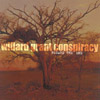 Death is an opportunity, a chance to either lament the loss orappreciate what is being left. It is the struggle to go off in fear, indoubt or to depart with head held high. In any case, it is a subjectthat is difficult to approach head on—and probably for the best, as thetrue weight of dying lies not in the act itself but in everythingleading up to it. Regard the Endapproaches death obliquely, offering the feelings, textures, andmusings on life that make death such a spectacular event. There areslices of youthful abandon, loving memories and bitter regrets thathave rooted themselves in, and make the sting of passing even greater.It's the challenge to look back, to leave those thoughts behind,fearful yet hopeful, uncertain yet faithful, and embrace the totalityof it all. The Willard Grant Conspiracy explores these subjects with aversatile troupe of players, attacking their pieces with such a collageof instrumentation and tender arrangement, the songs bud and bloomright before your eyes. Somber acoustic guitar anchors the gruff,weathered vocals of singer Robert Fisher, the centerpiece of anensemble that offers dense, soaring trumpets and weary viola moans. Theheavy lineup grants Regard the End remarkable impact, allowingevery intonation and accent creep across and drive the emotion home.The opening song, "River in the Pines," is a civil war era ballad thatrambles on in a smoky, smoldering mass, crackling and waiting to popopen in a fiery burst. The mix of both traditional folk songs andoriginal works allows for personal expression and insight as well as amuch wider concept of the subject matter through time. A particularstrength of the Willard Grant Conspiracy, along with the utilization oftheir individual parts is the use of guest singers to help add to theatmosphere of their songs. Kristin Hersh appears on "The Ghost of theGirl in the Well," with an eerie contribution to the tale of a murderedyoung girl. She and fisher share the words and their pacing sets theentire scene in slow motion, drawing every last bit of feeling andpower from the disturbing imagery. Hersh's echoing, distant wails areaffecting as they sink into the depths of the music. Singer Jess Kleinalso contributes a set of stunning vocal performances on "The Trials ofHarrison Hayes," and several other songs. These additions strengthenthe already powerful punch in the Conspiracy's music. "The SufferingSong" is the emotional crux of Regard the End, with Fisher andKlein finding themselves on the edge and greeting the uncertainty ofwhat's beyond it with the certainty of what is there. "Suffering'sgonna come to everyone, someday." There is a restrained grace in theirvoices that makes the end of the journey feel less like a defeat andmore like a triumph. The ability to find strength and composure throughsorrow and adversity shines through and closes the album on a gloriousnote.
Death is an opportunity, a chance to either lament the loss orappreciate what is being left. It is the struggle to go off in fear, indoubt or to depart with head held high. In any case, it is a subjectthat is difficult to approach head on—and probably for the best, as thetrue weight of dying lies not in the act itself but in everythingleading up to it. Regard the Endapproaches death obliquely, offering the feelings, textures, andmusings on life that make death such a spectacular event. There areslices of youthful abandon, loving memories and bitter regrets thathave rooted themselves in, and make the sting of passing even greater.It's the challenge to look back, to leave those thoughts behind,fearful yet hopeful, uncertain yet faithful, and embrace the totalityof it all. The Willard Grant Conspiracy explores these subjects with aversatile troupe of players, attacking their pieces with such a collageof instrumentation and tender arrangement, the songs bud and bloomright before your eyes. Somber acoustic guitar anchors the gruff,weathered vocals of singer Robert Fisher, the centerpiece of anensemble that offers dense, soaring trumpets and weary viola moans. Theheavy lineup grants Regard the End remarkable impact, allowingevery intonation and accent creep across and drive the emotion home.The opening song, "River in the Pines," is a civil war era ballad thatrambles on in a smoky, smoldering mass, crackling and waiting to popopen in a fiery burst. The mix of both traditional folk songs andoriginal works allows for personal expression and insight as well as amuch wider concept of the subject matter through time. A particularstrength of the Willard Grant Conspiracy, along with the utilization oftheir individual parts is the use of guest singers to help add to theatmosphere of their songs. Kristin Hersh appears on "The Ghost of theGirl in the Well," with an eerie contribution to the tale of a murderedyoung girl. She and fisher share the words and their pacing sets theentire scene in slow motion, drawing every last bit of feeling andpower from the disturbing imagery. Hersh's echoing, distant wails areaffecting as they sink into the depths of the music. Singer Jess Kleinalso contributes a set of stunning vocal performances on "The Trials ofHarrison Hayes," and several other songs. These additions strengthenthe already powerful punch in the Conspiracy's music. "The SufferingSong" is the emotional crux of Regard the End, with Fisher andKlein finding themselves on the edge and greeting the uncertainty ofwhat's beyond it with the certainty of what is there. "Suffering'sgonna come to everyone, someday." There is a restrained grace in theirvoices that makes the end of the journey feel less like a defeat andmore like a triumph. The ability to find strength and composure throughsorrow and adversity shines through and closes the album on a gloriousnote.  Sitting down to listen to this disc for the first time, I figured that I was going to get something along the lines of Loveman Plays Psychedelic Swing(three-fourths of Emergency! is also in the Quintet, the discs wererecorded nine months apart, etc.), and instead, I got a trip back toGround-Zero's Plays Standards, courtesy of, of all things,Kikuchi Naruyoshi's sax playing. Seven very long and productive yearsago, it grated on my nerves with its schmaltzy tenor intensity, and itstill does, only now it's rounded out by another guy on alto andsoprano. Thankfully, just when the two of them threaten to drag theshoulder-scrunching out a bit too long on "Song for Che", they'reslapped aside by the wailing guitar and thudding drums of Otomo's own"Reducing Agent" in one of the most welcome transitions I've heard inmonths. The original tunes aren't especially brilliant, and they lackeasy hooks that they can be identified by, but they also give the albumand ensemble the feeling of being defined by more than just somebody'srecord collection. Similarly, while I'm not wild about Sachiko M'scontribution of sine waves to a Mingus tune, her involvement in thelast two tracks clearly shows off how her repertoire has grown sinceher sample-triggering days. (Mind you, any one of two dozen otherrecordings from the last couple of years would do this just as well.)Yoshigaki Yasuhiro's drumming leans towards the energetic and heavymost of the time, but it's never distracting, and it's even downrightpretty when he scales it back to brushed cymbals. Aside from the saxbits that get my hackles up, then, this is the kind of revisitingproject that I wish more artists would tackle: instead of just remixingtwenty-year-old tapes and grinding out some 12"s for the hell of it,ONJQ have gone back to old notions and produced an album that reflectshow they've changed as musicians. If we're lucky, things will be justas fresh in 2011.
Sitting down to listen to this disc for the first time, I figured that I was going to get something along the lines of Loveman Plays Psychedelic Swing(three-fourths of Emergency! is also in the Quintet, the discs wererecorded nine months apart, etc.), and instead, I got a trip back toGround-Zero's Plays Standards, courtesy of, of all things,Kikuchi Naruyoshi's sax playing. Seven very long and productive yearsago, it grated on my nerves with its schmaltzy tenor intensity, and itstill does, only now it's rounded out by another guy on alto andsoprano. Thankfully, just when the two of them threaten to drag theshoulder-scrunching out a bit too long on "Song for Che", they'reslapped aside by the wailing guitar and thudding drums of Otomo's own"Reducing Agent" in one of the most welcome transitions I've heard inmonths. The original tunes aren't especially brilliant, and they lackeasy hooks that they can be identified by, but they also give the albumand ensemble the feeling of being defined by more than just somebody'srecord collection. Similarly, while I'm not wild about Sachiko M'scontribution of sine waves to a Mingus tune, her involvement in thelast two tracks clearly shows off how her repertoire has grown sinceher sample-triggering days. (Mind you, any one of two dozen otherrecordings from the last couple of years would do this just as well.)Yoshigaki Yasuhiro's drumming leans towards the energetic and heavymost of the time, but it's never distracting, and it's even downrightpretty when he scales it back to brushed cymbals. Aside from the saxbits that get my hackles up, then, this is the kind of revisitingproject that I wish more artists would tackle: instead of just remixingtwenty-year-old tapes and grinding out some 12"s for the hell of it,ONJQ have gone back to old notions and produced an album that reflectshow they've changed as musicians. If we're lucky, things will be justas fresh in 2011. 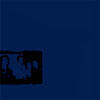 Mars has always been my favorite of the four No New Yorkbands because their music sounds consistently on the verge of collapse.While fellow scenesters DNA share a similar spastic approach, there canbe no denying that Mars helped take the noisier, amateurish tendenciesof the genre to their logical extremes, becoming one of the first andmost important groups to create noise music under rockist pretence.Whereas the particular "style" or modus operandi of cohorts like TheJerks and The Contortions are now somewhat easy to pinpoint, Marsremains as pleasantly enigmatic as they ever were, no doubt becausethere was never much of a guiding force behind their work in the firstplace. The catchy, almost generically post-punk grooves laid down onthe band's first single ("3-E" b/w "11,000 Volts") mask the fact thatmost of the members started learning their instruments at the firstpractice, if that early. Even so, the Martian melting pot,though widely mimicked, is a unique and matchless brew, thanks to theband's method for combining disparate melodic or rhythmic lines,creating within each song a struggle for dominance that, instead ofbringing the music to a standstill, creates a kind of perpetualroll-over and an indirect, multi-layered, even schizophrenic sound. Theresults range from distorted, Beefheart-ian call-and-response freakoutsto near-impenetrable tapestries of noise that writhe with the burden oftheir incompatible elements but maintain a thrilling, if precariousbalance. It was no doubt this chaotic, storm-like quality of the Marssound that prompted Jim "Feotus" Thirwell to lend his production skillsto the band's first archival release, 78+. Thirwell's mixemphasizes the music's quasi-industrial elements and its low-end,making the swirling atmospherics and more abrasive undercurrents ofmany tracks more prominent. Though his approach was admirable, andespecially effective on the several live tracks included, the band wasunsatisfied, and decided to put out a remixed, re-sequenced CD,including only their 11-song studio output and modeled to appear as aMars LP would have, had they released it over 20 years ago. The new mixsounds great and gives the songs a punch quietly lacking on 78+and even a bit on Eno's original mixes. The frenetic tumble of thesongs keeps its form, and a new crispness makes the music sound as wildas ever. The limited track list leaves out only three tracks from 78+'snear-complete collection, and this disc honestly feels like thefull-length that should have been. It's nice to see music this goodgetting the treatment and presentation it deserves.
Mars has always been my favorite of the four No New Yorkbands because their music sounds consistently on the verge of collapse.While fellow scenesters DNA share a similar spastic approach, there canbe no denying that Mars helped take the noisier, amateurish tendenciesof the genre to their logical extremes, becoming one of the first andmost important groups to create noise music under rockist pretence.Whereas the particular "style" or modus operandi of cohorts like TheJerks and The Contortions are now somewhat easy to pinpoint, Marsremains as pleasantly enigmatic as they ever were, no doubt becausethere was never much of a guiding force behind their work in the firstplace. The catchy, almost generically post-punk grooves laid down onthe band's first single ("3-E" b/w "11,000 Volts") mask the fact thatmost of the members started learning their instruments at the firstpractice, if that early. Even so, the Martian melting pot,though widely mimicked, is a unique and matchless brew, thanks to theband's method for combining disparate melodic or rhythmic lines,creating within each song a struggle for dominance that, instead ofbringing the music to a standstill, creates a kind of perpetualroll-over and an indirect, multi-layered, even schizophrenic sound. Theresults range from distorted, Beefheart-ian call-and-response freakoutsto near-impenetrable tapestries of noise that writhe with the burden oftheir incompatible elements but maintain a thrilling, if precariousbalance. It was no doubt this chaotic, storm-like quality of the Marssound that prompted Jim "Feotus" Thirwell to lend his production skillsto the band's first archival release, 78+. Thirwell's mixemphasizes the music's quasi-industrial elements and its low-end,making the swirling atmospherics and more abrasive undercurrents ofmany tracks more prominent. Though his approach was admirable, andespecially effective on the several live tracks included, the band wasunsatisfied, and decided to put out a remixed, re-sequenced CD,including only their 11-song studio output and modeled to appear as aMars LP would have, had they released it over 20 years ago. The new mixsounds great and gives the songs a punch quietly lacking on 78+and even a bit on Eno's original mixes. The frenetic tumble of thesongs keeps its form, and a new crispness makes the music sound as wildas ever. The limited track list leaves out only three tracks from 78+'snear-complete collection, and this disc honestly feels like thefull-length that should have been. It's nice to see music this goodgetting the treatment and presentation it deserves. 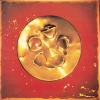 Everyone knows what became of the members of Slint following theirsplit. From the Palace Brothers records to Aerial/Papa M to Tortoise tothe For Carnation, all have kept pretty busy and their individualprojects have gotten a fair amount of notice. That is, with theexception of Evergreen, who usually evoke a response of "who?" whenevertheir name is dropped outside of their native Louisville, KY. FormerSlinter Britt Walford joined the band in 1993, adding his powerhousesignature energy to the overall feel of the band which already held afair amount of gumption. Their self-titled debut and only release nowsees well-deserved reissue treatment from Temporary Residence,including two bonus tracks left off the original pressing. Based onSean McLoughlin's yelped meanderings alone, Evergreen deserve a listen,after which the listener (read: victim) will be forever entranced andotherwise sucked in by the infectious tempos and brutal punksensibilities. Those tired of the recent '60s and '70s rip-off revivalbands will feel an immense joy listening to this record, as their toestap, arms sway, heads thrash, and bodies flail against one another. Itsounds like its influences though with an added bit of modern moxy, andfits right along some of the classic records of the punk and post-punkgenres. "Petting the Beast," "Whip Cream Bottle," "Plastic Bag": allhave the ability to tear down walls with their naked aggression. Thenthe funky bass and shredding guitars of "Klark Kent" arrive to bringthe roof in after them. Things slow down a bit with "Sweet Jane" (no,not that one) and "Glass Highway" — both quite good — but it's oflittle consequence: the damage is already done and will return again on"Coyote" just in case there's anyone left alive. The two bonus tracksare both good fun, and fit right along with the rest in winningfashion. All in all, a horribly ignored release now ready for thespotlight, and deserving every bit of the attention.
Everyone knows what became of the members of Slint following theirsplit. From the Palace Brothers records to Aerial/Papa M to Tortoise tothe For Carnation, all have kept pretty busy and their individualprojects have gotten a fair amount of notice. That is, with theexception of Evergreen, who usually evoke a response of "who?" whenevertheir name is dropped outside of their native Louisville, KY. FormerSlinter Britt Walford joined the band in 1993, adding his powerhousesignature energy to the overall feel of the band which already held afair amount of gumption. Their self-titled debut and only release nowsees well-deserved reissue treatment from Temporary Residence,including two bonus tracks left off the original pressing. Based onSean McLoughlin's yelped meanderings alone, Evergreen deserve a listen,after which the listener (read: victim) will be forever entranced andotherwise sucked in by the infectious tempos and brutal punksensibilities. Those tired of the recent '60s and '70s rip-off revivalbands will feel an immense joy listening to this record, as their toestap, arms sway, heads thrash, and bodies flail against one another. Itsounds like its influences though with an added bit of modern moxy, andfits right along some of the classic records of the punk and post-punkgenres. "Petting the Beast," "Whip Cream Bottle," "Plastic Bag": allhave the ability to tear down walls with their naked aggression. Thenthe funky bass and shredding guitars of "Klark Kent" arrive to bringthe roof in after them. Things slow down a bit with "Sweet Jane" (no,not that one) and "Glass Highway" — both quite good — but it's oflittle consequence: the damage is already done and will return again on"Coyote" just in case there's anyone left alive. The two bonus tracksare both good fun, and fit right along with the rest in winningfashion. All in all, a horribly ignored release now ready for thespotlight, and deserving every bit of the attention. The feeling of glee that came over me finding something like this inthe bins at a cheap price was amazing. It's almost as if somebody hasbeen reading my mind as of late. German label Repertoire has snatchedthis gem from AON's back catalogue—their first 12" EP, originallyreleased on ZTT back in 1983—and slapped some bonus 12" remixes andincluded a DVD of videos. The Art of Noise were one of the first groupsto introduce sampling of non-musical sounds into musical rhythms andtextures and Into Battle,their first EP is a groundbreaking legend. The EP featured two minorhits, the chunky "Beat Box," which influenced a ton of 1980s acts andprovided the blueprints for a style later described as "big beat" inthe 1990s, and the 10+ minute lush "Moments in Love," most famouslyused as Madonna and Sean Penn's wedding march. Both were later compiledon other AON releases like Who's Afraid of... and Daft,but there was something that made this EP a bit more interesrting.Short pieces like "Battle," "Flesh In Armor," "Donna," and thesix-second "Bright Noise" add neat little transitions, which wassomething I had always kind of hoped other bands might take hint fromand make a 12" EP something more than just an ordinary 12" single.(Tragically, it didn't happen enough.) The CD is rounded out with two12" remixes of their arguably biggest single from the TrevorHorn-produced ZTT era, "Close to the Edit," both of which of which Ihad never heard and am likewise pleased by the addition of live pianoand other instrumentation not present in the original versions. The DVDwhich comes along with this is what nearly made me drool. Looking atthe package, it lists the videos for "Moments in Love," "Beat Box," and"Close to the Edit" (as well as the forgettable track "Metaforce" fromtheir reunion a couple years ago). Back in the 1980s, everything wasn'tas good as people think they remember, musically. MTV didn't actuallyplay a lot of cool stuff, as I vividly remember being bombarded withTom Petty, John (Cougar? not Cougar!) Mellencamp, and Bryan Adams. Itwas the show Night Flight on the USA Network where I firstsaw/heard/videotaped bands like Coil, Skinny Puppy, Cabaret Voltaire,Wire, and The Art of Noise. I have aging videotapes with videos like"Beat Box" recorded and the thought of it on a DVD was a divine gift.However, much to my dismay, "Beat Box" doesn't appear despite beinglisted (BASTARDS!) I do get to have the gorgeous video of "Moments inLove" with wigs, singing turtles, and ice-skaters in slow motion andthe award-winning classic of "Close (to the Edit)," where three guysand a little girl trash various musical instruments, so, I guess I getwhat I pay for. However, should this "Repertoire Records" (never heardof them before this) ever fix this mistake, I'll be quite happy andquickly try to exchange this version with them.
The feeling of glee that came over me finding something like this inthe bins at a cheap price was amazing. It's almost as if somebody hasbeen reading my mind as of late. German label Repertoire has snatchedthis gem from AON's back catalogue—their first 12" EP, originallyreleased on ZTT back in 1983—and slapped some bonus 12" remixes andincluded a DVD of videos. The Art of Noise were one of the first groupsto introduce sampling of non-musical sounds into musical rhythms andtextures and Into Battle,their first EP is a groundbreaking legend. The EP featured two minorhits, the chunky "Beat Box," which influenced a ton of 1980s acts andprovided the blueprints for a style later described as "big beat" inthe 1990s, and the 10+ minute lush "Moments in Love," most famouslyused as Madonna and Sean Penn's wedding march. Both were later compiledon other AON releases like Who's Afraid of... and Daft,but there was something that made this EP a bit more interesrting.Short pieces like "Battle," "Flesh In Armor," "Donna," and thesix-second "Bright Noise" add neat little transitions, which wassomething I had always kind of hoped other bands might take hint fromand make a 12" EP something more than just an ordinary 12" single.(Tragically, it didn't happen enough.) The CD is rounded out with two12" remixes of their arguably biggest single from the TrevorHorn-produced ZTT era, "Close to the Edit," both of which of which Ihad never heard and am likewise pleased by the addition of live pianoand other instrumentation not present in the original versions. The DVDwhich comes along with this is what nearly made me drool. Looking atthe package, it lists the videos for "Moments in Love," "Beat Box," and"Close to the Edit" (as well as the forgettable track "Metaforce" fromtheir reunion a couple years ago). Back in the 1980s, everything wasn'tas good as people think they remember, musically. MTV didn't actuallyplay a lot of cool stuff, as I vividly remember being bombarded withTom Petty, John (Cougar? not Cougar!) Mellencamp, and Bryan Adams. Itwas the show Night Flight on the USA Network where I firstsaw/heard/videotaped bands like Coil, Skinny Puppy, Cabaret Voltaire,Wire, and The Art of Noise. I have aging videotapes with videos like"Beat Box" recorded and the thought of it on a DVD was a divine gift.However, much to my dismay, "Beat Box" doesn't appear despite beinglisted (BASTARDS!) I do get to have the gorgeous video of "Moments inLove" with wigs, singing turtles, and ice-skaters in slow motion andthe award-winning classic of "Close (to the Edit)," where three guysand a little girl trash various musical instruments, so, I guess I getwhat I pay for. However, should this "Repertoire Records" (never heardof them before this) ever fix this mistake, I'll be quite happy andquickly try to exchange this version with them.  Osama "Sam" Shalabi's new full-length album with his group Shalabi Effect is a bit of a departure from recent solo outings, which focused on improvisation and textured electronic instrumentals. The musicians assisting Shalabi on Pink Abyss are predictably drawn from the ranks of Montreal musical collectives and supergroups such as gy!be, Do May Say Think, Set Fire To Flames and Broken Social Scene.
Osama "Sam" Shalabi's new full-length album with his group Shalabi Effect is a bit of a departure from recent solo outings, which focused on improvisation and textured electronic instrumentals. The musicians assisting Shalabi on Pink Abyss are predictably drawn from the ranks of Montreal musical collectives and supergroups such as gy!be, Do May Say Think, Set Fire To Flames and Broken Social Scene.
